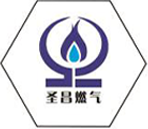
Nov . 14, 2024 10:02
Back to list
صمام التحكم الهوائي
Understanding the Air Control Valve A Comprehensive Overview
The air control valve, often referred to as a pneumatic control valve, plays a critical role in various industrial applications that involve the management and regulation of airflow in pneumatic systems. These valves facilitate the control of air pressure, flow rate, and direction, making them indispensable in fields such as manufacturing, automotive, and environmental control systems. This article aims to delve into the significance, working principles, types, and applications of the air control valve.
Significance of Air Control Valves
In industrial processes, controlling air flow and pressure is fundamental to achieving optimal performance and energy efficiency. Air control valves help to maintain the required pressure levels within a system, preventing overpressurization or underpressurization that could lead to system failures or inefficiencies. By regulating the amount of air entering a system, these valves can also assist in reducing energy consumption and enhancing overall equipment performance.
Working Principles
An air control valve operates based on various principles depending on its design and intended application. The basic operation involves opening or closing a passage to control the flow of air. The valve may be actuated manually, electrically, or pneumatically
1. Manual Control In some applications, operators manually adjust the valve. This method is often straightforward but may not provide the precision required in more advanced systems.
2. Electric Actuation Electric-actuated air control valves use an electric motor to control the opening and closing of the valve. This allows for precise control and can be integrated with automation systems for remote operation.
.
Types of Air Control Valves
صمام التحكم الهوائي

There are various types of air control valves, each tailored for specific applications
1. Regulating Valves These valves regulate the pressure and flow rate in a system to maintain desired operational conditions.
2. Directional Control Valves Used to control the direction of airflow in a system, these valves are vital in applications where airflow must be redirected frequently.
3. Flow Control Valves These valves adjust the flow rate of air, ensuring that processes receive the correct amount of air pressure and flow.
4. Check Valves These prevent backflow in pneumatic systems, ensuring that air flows in one direction and does not return, which is critical for maintaining system integrity.
5. Solenoid Valves Utilizing an electromechanical solenoid to open or close the valve, solenoid valves are often used in automated systems for their reliability and speed.
Applications of Air Control Valves
The applications of air control valves are vast and varied. In the manufacturing industry, they are commonly used in assembly lines to control pneumatic tools and actuators. In the automotive sector, they manage systems such as brakes or suspension systems, where precise control of air pressure is paramount to ensure safety and performance. Furthermore, air control valves are integral in HVAC systems, where they help regulate air flow and temperature within buildings, contributing to energy efficiency and occupant comfort.
Conclusion
In conclusion, the air control valve is a vital component in pneumatic systems across numerous industries. Its ability to regulate air pressure, flow rate, and direction contributes to the efficiency, performance, and safety of a wide array of applications. By understanding the significance, working principles, various types, and applications of air control valves, engineers and operators can better appreciate and implement these critical devices in their systems. As industries continue to evolve and seek greater efficiency, the role of air control valves will only become more pronounced, driving innovations in design and application to meet the changing demands of technology and industry.
Next:
Latest news
-
Safety Valve Spring-Loaded Design Overpressure ProtectionNewsJul.25,2025
-
Precision Voltage Regulator AC5 Accuracy Grade PerformanceNewsJul.25,2025
-
Natural Gas Pressure Regulating Skid Industrial Pipeline ApplicationsNewsJul.25,2025
-
Natural Gas Filter Stainless Steel Mesh Element DesignNewsJul.25,2025
-
Gas Pressure Regulator Valve Direct-Acting Spring-Loaded DesignNewsJul.25,2025
-
Decompression Equipment Multi-Stage Heat Exchange System DesignNewsJul.25,2025

